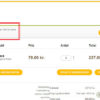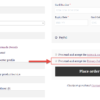If your WooCommerce store already generates a few orders per month, then it’s probably the right time to step up and start analyzing your ecommerce data.
Despite the “WooCommerce > Reports” tab within the WordPress dashboard can give you sales figures, stock takes and customer lists – we all know that’s a very basic, limited functionality. It gives you CSV export but no automation. There are no filters and no segments. It’s accurate but still not enough.
Data plays a vital role on your WooCommerce website. If you can get access to a wider range of figures, reports, screens, calculations, exports, filters, integrations, then it’s very likely you can understand how to increase your profits.
Data can help you identify problems (hello, cart abandonment – biggest responsible for low conversion rates), can help you select popular products for your cross-sell and up-sell strategy, can give you a hint on how to improve the user experience and have them check out faster – as well as giving you a hand analyzing patterns, performances and customer behavior.
In this (very long) post, we’ll take a look at ways to gather ecommerce data beyond the default “Reports” section, generate email digests, print advanced reports, filter and segment orders and customers, and much more. I will be referring to the two biggest tracking software for WooCommerce: Google Analytics and Metorik.
1. Google Analytics for WooCommerce Tracking
Every WordPress website should be linked to a Google Analytics account. I believe there is no doubt about that.
However, WooCommerce and ecommerce websites in general require additional tracking. For example, what about calculating the cart abandonment rate? Or the add to cart percentage for each product?
Well, all you need is a WooCommerce plugin and some advanced set up within Google Analytics!
a) WooCommerce Plugin & Google Analytics Setup
In order to enable advanced WooCommerce ecommerce tracking you first need a free Google Analytics account.
Once that’s setup and you’ve enabled “Enhanced Ecommerce” tracking (this is super important, the how-to is here: https://support.google.com/analytics/answer/6032539?hl=en&ref_topic=6014839), you can then install the free, official WooCommerce plugin available on WooCommerce.com called “WooCommerce Google Analytics”
Plugin is very easy to setup, just enter your unique Google Analytics ID and then check all the boxes under WooCommerce > Settings > Integration > Google Analytics:

b) Available Reports
Now that WooCommerce and Google Analytics are “talking to each other”, it’s time to see what you can do with this integration (on top of the standard Google Analytics features such as Real Time, Audience, Acquisition and Behavior you get out of the box).
In Google Analytics, click on the “Conversions” tab and then on “Ecommerce”. You’ll now see a lot of interesting data and reports:
- Overview: an overall idea of the revenue, AOV (average order value) and conversion rate generated in a given date range
- Shopping Behavior: a handy graph to analyze cart and checkout abandonment
- Checkout Behavior: similarly to the above, this gives you a graphic idea of your checkout funnel progression, including abandoned carts
- Product Performance: an excellent table to analyze how each product performed within the selected date, with data such as quantity, price, number of add to cart and checkouts
- Sales Performance: for each transaction you can get amount, tax, shipping, refunds and so on – a good table overview of all your orders
- Product List Performance: this won’t work with WooCommerce, as all products are considered as belonging to the same list
Here are a couple of screenshots of the most important Google Analytics reports (click on any image to open lightbox):
c) Automatic Email Digests
You can do some automation in Google Analytics and I like to auto-email myself every Monday morning with some of the most important reports.
In Google Analytics, email digests are called “custom alerts“. You can set them up here: https://support.google.com/analytics/answer/1033021?hl=en
Email digests are awesome and allow you to never forget about tracking. If there is something wrong (for example, one week the WooCommerce tracking plugin had a bug and was not tracking properly), you can immediately go and fix things. For big stores, I would imagine daily digests are the norm.
2. Metorik for WooCommerce Tracking
It’s no surprise that a former WooCommerce/Automattic employee, Bryce Adams, left a comfortable job to go all-in and work full time on his own product.
Also, it’s no surprise Bryce focused on the biggest need for WooCommerce entrepreneurs: advanced tracking, reporting, filtering and data integration.
a) WooCommerce Plugin & Metorik Setup
In order to enable advanced WooCommerce tracking you first need a Metorik account. Plans start from $20/mo, including a no-restriction no-credit-card-required 30 day free trial (I personally went through the trial and after 30 days I purchased the service. It’s too good to be true).
You can then install the free, official Metorik plugin available on WordPress.org called “Metorik Helper”, but don’t worry – Metorik itself will do this automatically for you.
Plugin needs no setup. On activation, you’ll just need to login to Metorik in order to connect it to WooCommerce. Easy peasy 🙂
b) Available Metorik Reports
The “power” of Metorik is not only reports – in fact you will read later how you can also get Customer Insights, Segmenting, Product Analysis, Digests and Integrations.
In relation to Reports alone, Metorik is of course 100% developed to give clarity to WooCommerce store owners. Google Analytics is great but Metorik is specifically designed for WooCommerce. In better words, Metorik is fully integrated with WooCommerce, and this means:
- WooCommerce currencies
- WooCommerce order statuses (processing, on-hold, etc)
- WooCommerce taxes
- WooCommerce shipping
- WooCommerce product variations
- WooCommerce subscriptions
- …and so on
You get the picture. While Google Analytics is generic and only gives you an overview of the website data, Metorik gets into the WooCommerce nitty-gritty and gives you full compatibility.
Under the “What’s covered” section of Metorik‘s Reports page you can see about 50 screenshots of what’s possible to do. No point in copying all the report scenarios here – just go and take a look on the website.
The default dashboard alone gives you an immediate view of the latest orders, AOV, conversion rate, traffic, mobile vs desktop, top and worst sellers, customer lifetime value and best customers:

However, is when you click onto “Reports” that Metorik gives you absolutely everything you need, including:
- Revenue: gives you gross, net revenue for any period, together with a breakdown of all transactions
- Orders: similar to the previous report, but here we get into “WooCommerce” mode. You can see orders by shipping method, payment gateway, currency, status, country, ZIP (by any billing or shipping field basically), spend by day, spend by hour. Each report is downloadable and filterable
- Refunds: excellent tool for B2C companies, in here you can calculate your refund rate and even the average time between a transaction and a refund (what about sending an automated email within that period? Oh, wait – you can do that in Metorik Engage!)
- Devices: unlike for Business Bloomer website, where traffic is 97% on desktop, this report tab is useful to understand your customers and notice differences between browsers, devices, operating systems
- Sources: this is a brand new feature that tracks the purchase source. Are your products or brand listed on other websites? Who is sending you more sales?
- Forecast: this report lets you forecast future activity for your WooCommerce store. It does that by looking at your growth rate over time and applying that either linearly or exponentially according to your criteria
- Customers: this is a very advanced screen and you can not only see the Lifetime Value (LTV), Average Order Value (AOV) and other standard KPIs… you can also refine all this and group customers by role, billing/shipping field (e.g. customers by shipping city) and even view a worldwide map with the latest orders
- Customer Retention: this is for one-time vs returning customers… which one is bringing you more revenue, has the highest AOV and takes less time to buy?
- Compare Products: this is another “gem” of Metorik, where from within the app you can search for your own WooCommerce products and compare them in real time given a specific date range
Here are a few screenshots taken from my own Metorik account (click on any image to open lightbox):
And this is not over, as WooCommerce Orders, Customers, Products and Coupons have their own sub-sections within the dashboard.
Each of these section allows you to export, segment, sort and select a date range so that you can then download / view the list. You can even save the segment to remember it later and print / view it again without having to regenerate it:

c) Automatic Metorik Email Digests
We talked earlier about how important it is to email yourself with the most important reports – so that you don’t need to think about it ever again.
Metorik has even more advanced features than Google Analytics. You can:
- Create General or Product-specific Digests
- Schedule the digest to be sent by email or Slack
- Decide Emails/Slack channels to send them to
- Have multiple digests
- Define frequency

It’s very easy to set them up and delete them – combining this with a Google Analytics “custom alert” with traffic and other KPIs would give you a full overview on your website performance without having to login each week to any of the accounts.
d) Metorik Exports
Remember when we said earlier you can download anything from Metorik, including segments of your customers and/or orders based on certain criteria and segments?
Well, the great thing is that they will be saved here, and at a later date you can re-download or compare them to the newest ones. The table will also give you a summary of their frequency (if they are recurring) and actions you can take.
Please note – by using Metorik you won’t need a Customer/Order Export plugin any longer 🙂 You can in fact export immediately or recurringly customers/orders and include meta, decide the layout (e.g. one row per item) and the delimiter.
e) Metorik Engage: automated emails to customers
I already use an email marketing software for lead automation and customer on-boarding, but if you were looking for an alternative to “Follow-Up” plugins, then Bryce is about to release a brand new Metorik perk.
Metorik Engage is a new add-on that’s currently in beta. It enables you to send automated emails to customers when they match certain rules (remember the Metorik powerful segmentation?). Engage will be a paid-addon, but with a very fair price based on your current plan.
For example, you can email customers a dynamically-generated coupon code when they’ve spent over $300, come from Australia, and haven’t ordered in 6 months. The possibilities are infinite.
March 2018 new features include: unsubscribing, automation list redesign, single automation page redesign, overall automation stats page, image inserting, button inserting, more coupon/discount settings, automation archiving, product review table, product re-order table and quite a lot of new variables.
It’s in beta right now, but will officially go live sometime in Q2 2018. For now, every store can join the beta from their Metorik dashboard.
f) Metorik Subscriptions Reporting
If you run a subscriptions business, and use WooCommerce Subscriptions plugin, you also know how important MRR, ARR, Churn and Retention % are.
Metorik can calculate those for you in real-time – neither WooCommerce or Google Analytics are able to do that.
g) Metorik Integrations with Customer Service software
If you use Zendesk, Freshdesk, Intercom, HelpScout or other customer service software together with WooCommerce, Metorik can create a bridge between the two APIs.
On every order and customer page on Metorik, you’ll be able to see past interactions with that customer.
Besides, if you’re looking at a customer’s profile and feel like reaching out to them, you can do that right from within Metorik: enter a message and hit send – behind the scenes Metorik will create a ticket or conversation in your support system and contact the customer.
3. Metorik Q&A
Metorik is a pretty new software and therefore many WooCommerce users don’t even know it exists or what it does.
Here’s a collection of questions and answers that might help you during your tracking software selection and maybe entice you to get the 30 days free Metorik trial.
a) Is Metorik secure and GDPR compliant?
Metorik runs on SSL, credit card data is not handled by Metorik, data is not shared with third parties and it is stored on a separate database.
For those of you in EU who will be affected by GDPR in May 2018, Metorik has also a nice knowledge base article.
b) Do I need a Google Analytics account even if I have Metorik?
Well, of course you do. Metorik measures the WooCommerce/ecommerce specifics, while Google Analytics specializes in tracking your traffic. If you use the two together, that’s your tracking combo.
Besides, you can import Google Analytics into Metorik, and Metorik will do all the calculation work for you and give you a unified report.
c) Is there a reporting solution that would allow me to view customer data (including custom checkout field data) at the product level?
d) How can I see customer visit and shopping history, and manage relationships in the user account page?
e) How can I display: 1) Customer life time value 2) How many customers are repeat customers 3) Last 4/6/12 months how many orders were by repeat customers?
f) Is there was a way to generate sales reports that get auto emailed to each of the sales agents on a daily/weekly basis where each agent would get a report of the sales of products that are assigned to them?
g) Is there a plugin which will automatically email a customer X days after purchase?
h) Is there a plugin for displaying profit margin on single products?
i) I sell clothes. Is there a way to export my orders to see what sizes were ordered for each shirt?
j) Is it possible to generate a mailing list for people that buy only a certain product?
k) My site running WooCommerce has 500k orders, now my admin is running really slow for search/edit and other action? What can I do?
l) How would I go about exporting orders by product order volume?
m) What if I want to offer customers 15% off as a thank you and send it to them after every x or y number of orders?
To save time, the answer to c) d) e) f) g) h) i) j) k) l) m) is always the same: use Metorik, as it can do that, and much more 🙂











Hi,
I have a client that wants to view analytics of his orders by payment and shipping method in the woocommerce dashboad. How could that be done?
Best regards,
Andrei
Hi Andrei, I guess you’ll need custom coding. Otherwise, Metorik gives you that out of the box